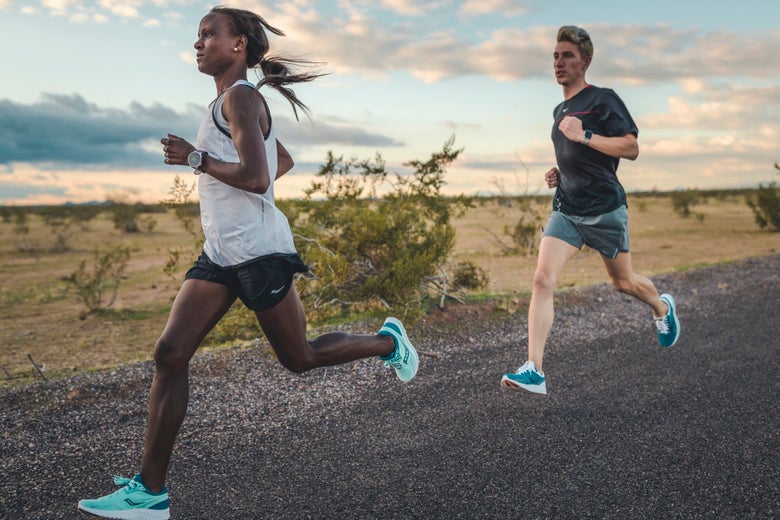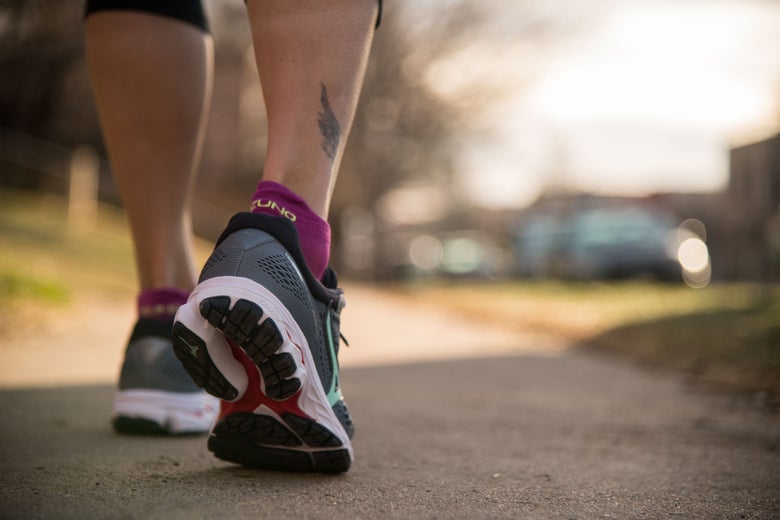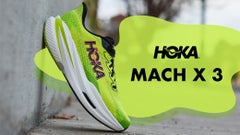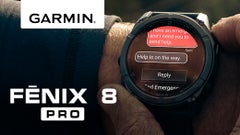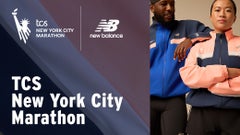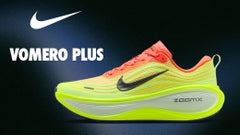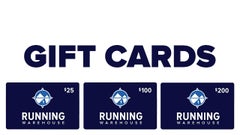What are the Different Types of Running Shoes?
Updated: August 28, 2024 by Jon Kawashima
At Running Warehouse, we pride ourselves on delivering the information you need to buy the shoes and gear that best suit your running needs. We love running and want to do our best to ensure you have a similar experience in the sport. Since the most essential component of running is the shoes on your feet, it is important to find a pair of shoes that meet your personalized needs as a runner. With the advancements in running shoe technology in recent years, running shoes have never been more equipped to meet the specific needs of every runner. Whether you run a few days a week for exercise, 6-7 days a week training for a race, or out on the trails, there is a shoe for that. In this guide, we'll discuss the nine different types of running shoes we sell, the primary characteristics of each one, and what they are best suited for. With this information, you should be able to determine what type(s) of shoes are right for you.
Quick Tips
Before we go any further, here are a few things to keep in mind when considering what type(s) of shoes best suit your running needs:
- If you run almost every day, consider building a shoe rotation, which means owning multiple pairs of running shoes with each shoe serving a different purpose. For example, a runner who is training for a half or full marathon may have a rotation featuring a shoe that is best for easy efforts (All-Around), a shoe that is best for speed workouts (Fast Runs), and finally, a shoe reserved for race day (Racing).
- Resist the temptation of buying a shoe just by its looks or price tag! Although the look and style of a shoe can be a huge consideration, make sure that the actual features of the shoe will serve your training needs first and foremost.
The 9 Types of Running Shoes
We categorize our shoes and break them down into nine different types: All-Around, Stability, Fast Runs, Max Cushion, Racing, Trail, Walking, Track and Field, and Cross Country. Read on to learn about the different shoe types and discover which one is right for you.
1. All-Around Running Shoes
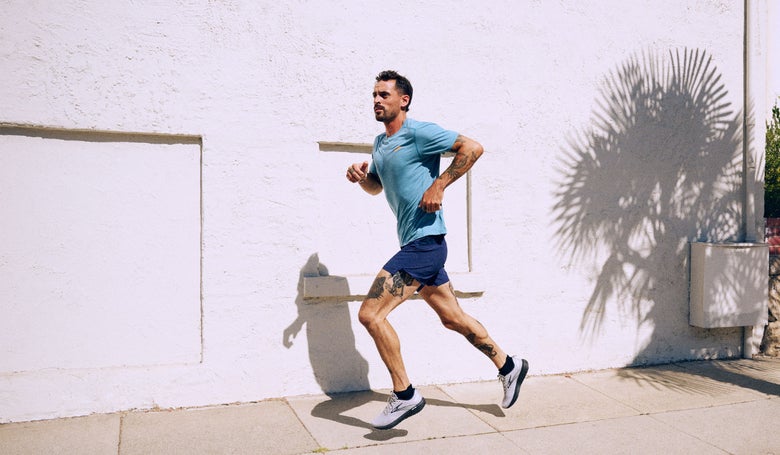
What They Are
The perfect starting point for this article and for newer runners is with the All-Around running shoe category, the type of running shoe that will work for every runner. All-around running shoes, often referred to as "daily trainers" in the running community, are engineered to be durable, comfortable, and versatile. If you're only going to own one type of running shoe, it should be from this category. Virtually every brand has an all-around running shoe model to anchor their line of running shoes.
What They Are Best For
With an emphasis on durability and comfort, these shoes should have your feet feeling right at home as soon as you slip them on and continue to be comfortable throughout the shoe's lifespan, which will ideally be for 300 to 600 miles. The midsole should have enough cushioning (also known as stack height) so your legs feel strong no matter how far you go. Whether you run 3-5 miles a few days per week or 50+ miles a week, a reliable all-around running shoe will handle those miles. And for those who wish to expand their running goals to incorporate faster efforts and speed training, all-around running shoes will generally be lightweight enough and have the responsive cushioning to pick up the pace. Given those qualities, it's no surprise that the All-Around shoe category is the most popular; even the most experienced and dedicated runners will have at least one daily trainer in their shoe rotation.
Pricing
Regarding price points, there are two tiers of daily trainers to consider. The top tier consists of daily trainers with premium technology, such as super foams, nylon or carbon plates, and max stack heights. These types of shoes make up a new subcategory of daily trainers called "Super Trainers" due to the similarities in technology and efficiency benefits of super shoes (racing shoes that contain carbon plates and premium foams). These super shoes are popular among runners who run 4-7 days a week and run multiple races yearly or for runners who want to have the latest and greatest technologies on their feet. You can expect to pay between $180 to $200+ for the newest models within this category.
The general prices for daily trainers in the standard tier will range between $110 to $160. The price variation will be related to the type and amount of materials used in the shoe. The midsole cushioning is undoubtedly the most important feature of a shoe, so you will notice that shoes with higher price points will usually have higher stacks of soft, lightweight, and responsive foams in the midsole.
2. Stability Running Shoes
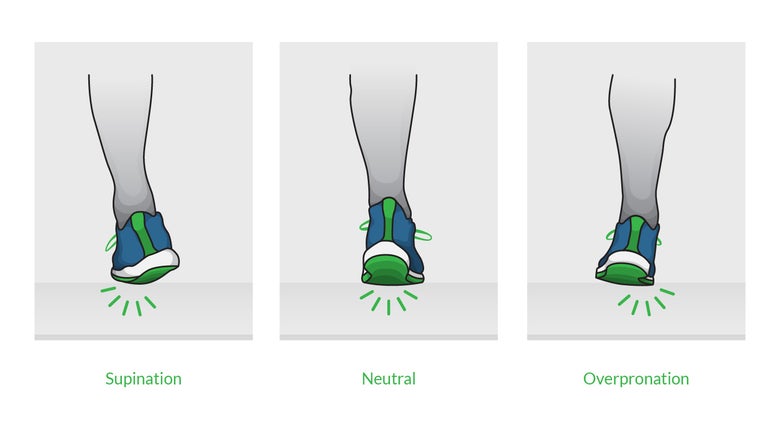
What They Are
Stability running shoes are designed specifically to help runners who overpronate when running. When we run, it is natural for the arches of our feet to collapse inward when they hit the ground to help our bodies absorb the impact. However, there comes a point when a runner overpronates and needs guidance or support to run comfortably. That's where stability shoes come into play. These shoes incorporate special design features like firmer midsole foams under the arch or bumper-like rails along the midsole to guide your foot into a more neutral alignment. To learn more about overpronation and whether stability shoes are right for you, check out our Ultimate Runner's Guide to Pronation.
What They Are Best For
Much like any other running shoe category, not all stability shoes are made the same. These shoes vary in the amount of support offered as well as what their best use is. To that end, we categorize our selection of stability shoes as either stability or max stability. Standard stability shoes are designed to reduce overpronation, whereas max stability shoes have features that greatly stabilize the foot and limit almost all arch collapse.
Stability shoes primarily fall within the All-Around or Max Cushion categories and are best suited to be used as daily trainers. While some models can be used for fast runs or races, stability shoes are not designed specifically for those purposes.
Pricing
Stability shoes range between $140 and $175, depending on the types of materials used and the amount of cushioning.
Check out our gear guide, The Best Stability Shoes of the Year, to discover some of our favorite stability options.
3. Fast Run Running Shoes

What They Are
For runners who want to focus on improving their speed, we recommend taking a look at our Fast Runs category. Also known as "uptempo trainers," shoes in this category are designed to go fast and possess certain characteristics to help runners reach their speed potential. This includes being as lightweight as possible and often having responsive foams and plated technology in the midsole. Generally, fast-run shoes should complement your all-around running shoe in your rotation and should not be the only running shoes you own. That being said, running shoes are becoming more and more versatile, and there are quite a few fast run shoes that could double as a daily trainer as well.
What They Are Best For
Uptempo trainers are best for speed workouts, which are runs geared toward faster speeds at a specific time or distance. These workouts can be done on the track, the roads, or even the trails. Generally speaking, speed workouts are incorporated into a runner's training 2-3 times a week.
Pricing
In terms of price point, you can expect to pay between $110 to $200 for shoes in this category. Just as with the All-Around and most other running shoe categories, there are different tiers of fast run shoes. The premium tier consists of shoes that are not only lightweight but also contain shoe technologies that result in a faster running experience. Some of these technologies feature lighter, bouncier, and more responsive foams or a plate embedded in the midsole that works with the foam to create higher energy return. Shoes in this tier will range between $160 to $200.
Fast-run shoes in the standard tier won't usually have the same premium technology and are priced around $110 to $150.
4. Max Cushion Running Shoes
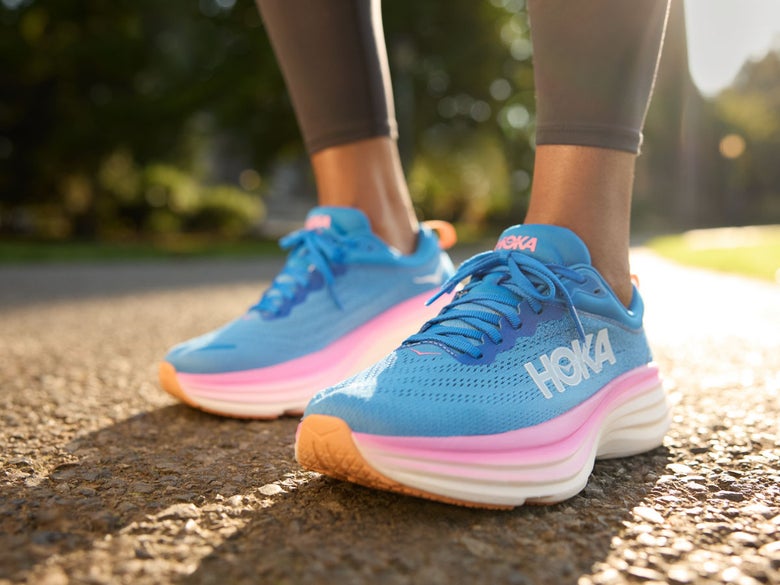
What They Are
Max cushion shoes offer a premium underfoot experience and have you feeling like you're running on clouds. In addition to feeling incredibly plush, these shoes provide amazing protection against the impact of ground contact, which allows runners to run longer and recover faster.
When it comes to the term "max cushioning," our focus is more on the quality of the cushioning as opposed to the sheer amount. We categorize max cushioned shoes by the plush and premium underfoot comfort you experience while running in these shoes. The cushioning will feel soft, protective, and stable, and some may even be lightweight and responsive.
What They Are Best For
Max cushion shoes are best suited for easier efforts and recovery runs and could serve as the only pair of running shoes for runners who are not currently incorporating speed work into their training. Due to their plush and premium underfoot feel, they can be used to rack up all the miles you throw at it.
While max cushion shoes live in their own category, they can cross over into other categories. For example, some max cushion shoes are also good all-around shoes, stability shoes, or lightweight and fast shoes.
Pricing
Max cushion shoes generally run between $140 to $200, depending upon the types of foams used, the amount of cushioning, and the presence or absence of plated technology.
5. Racing Shoes
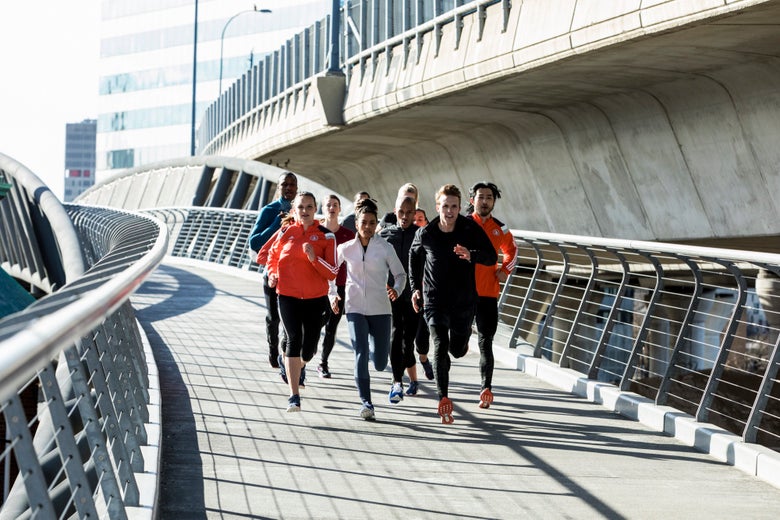
What They Are
Racing shoes may be the most misunderstood type of running shoes. Since they come with the highest price tags, some people interpret that to mean they must be the most versatile and the most durable, but that is not the case. Think of racing shoes like a tuxedo or ballroom gown; they should only be worn on special occasions.
Racing shoes generally contain the most innovative shoe technologies that brands have to offer and are designed to make you run as fast and efficiently as possible. To accomplish that, racing shoes usually contain lightweight, ultra-responsive cushioning, a minimal upper and outsole, and a carbon plate that propels runners forward.
What They Are Best For
We further categorize our racing shoes depending on the race distance the shoe is best suited for. We consider shorter race distances to range between 5K to 10K and long-distance races to range between the half-marathon to the full marathon. While we do not recommend choosing a shorter race distance shoe for a full marathon, all of the racing shoes in the long-distance category are suitable to be used in any race distance (5K to full marathon).
The main difference between the design of short-distance racing shoes and long-distance racing shoes is the amount of cushioning. Less cushioning means less weight, so racing shoes that are specifically designed for shorter race distances will sacrifice some underfoot cushioning to be as lightweight as possible. While long-distance racing shoes are still incredibly lightweight in their own right, they do need more cushioning to protect runners' legs for the multiple hours it takes to complete a marathon.
For less experienced runners who are new to racing, we recommend going with long-distance racing shoes, as they will contain more cushioning and offer flexibility, allowing you to use them for any race distance.
Pricing
Racing shoes range anywhere from $90 (for an entry-level shoe suitable for shorter race distances) to upwards of $300, with the most popular models ranging between $225 to $275. To learn more about race day shoes and which ones are some of our favorites, check out our guides on the Best Carbon-Plated Shoes of the Year and our Best Running Shoes of the Year.
6. Trail Running Shoes
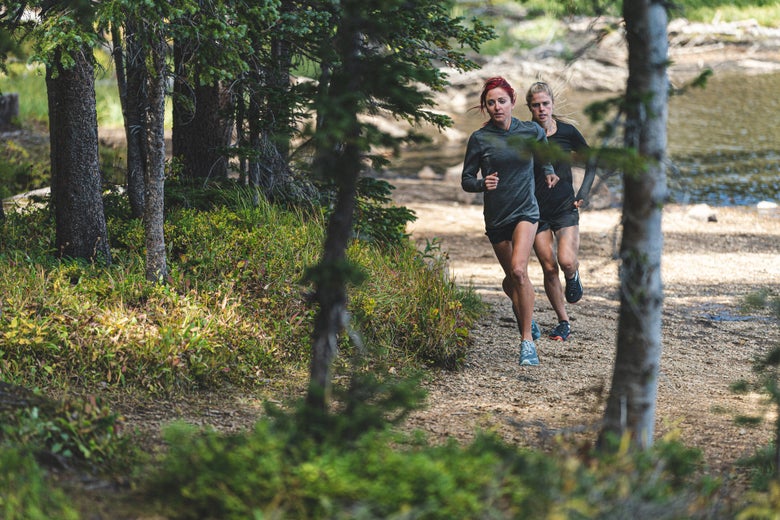
What They Are
Trail running shoes are built to withstand the elements runners encounter on the uneven and sometimes technical terrain on the trails. Trail running shoes will have a durable and protective upper as well as a tough outsole that contains small lugs to help with grip and traction. As their name suggests, trail shoes are best suited to be used on trail surfaces. And speaking of trail surfaces, our trail shoes are divided into 4 different surface categories: (1) Smooth trails and fire roads contain a majority of the trail shoes we carry; (2) Rocky and technical trail shoes are best used for hard and rugged trails; (3) Soft and muddy trail shoes are best suited for muddy and soggy environments; and (4) Snowy and icy trails are best suited for snowy and icy conditions.
What They Are Best For
Similar to road running shoes, trail running shoes can be further categorized based on what type of run they are best suited for. Some trail shoes are designed for going fast or built to deliver max cushion, while others are constructed to be a go-to, all-around shoe for daily workouts. The best trail shoe for you will depend on what you plan to use it for. If you plan to run on smooth trails and fire roads only occasionally, your road running shoes may suffice. However, if you find yourself on the trails regularly, then an all-around trail shoe will offer a more comfortable running experience.
Pricing
Like their road running counterparts, the prices of trail running shoes will vary depending on several factors, such as what type of foam is used, the amount of foam, whether they contain any plated technology, and what type of material is used in the outsole.
7. Walking Shoes
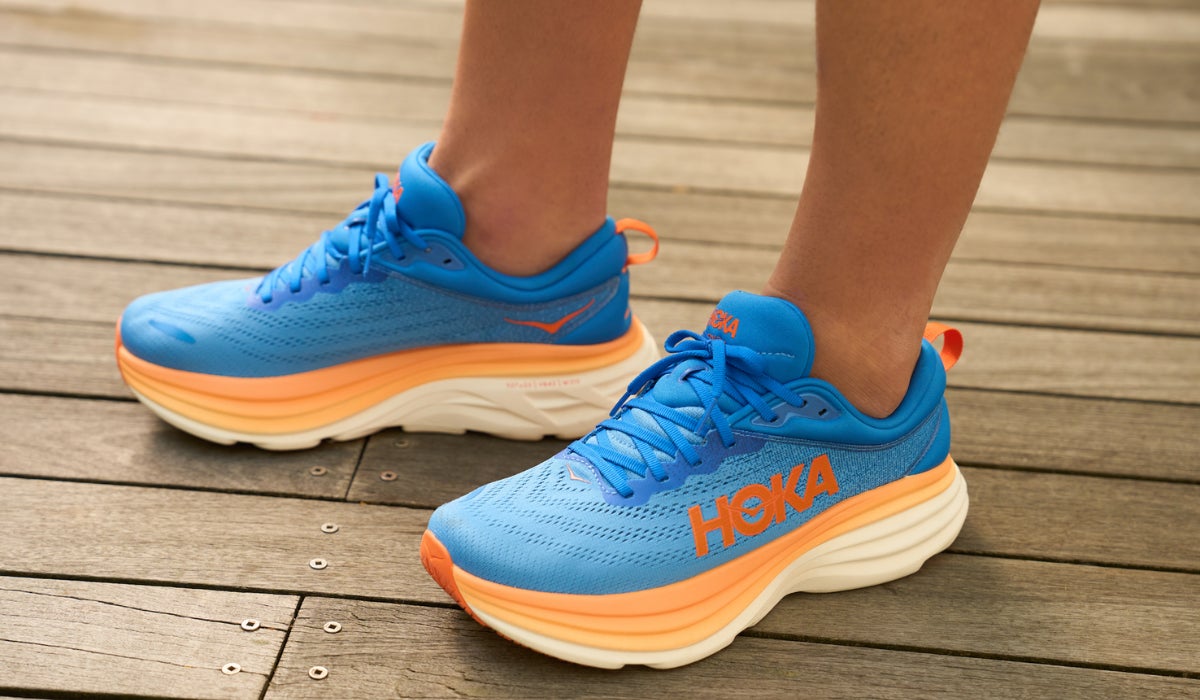
What They Are
This may seem counterintuitive, but just because a shoe is suitable to run in does not necessarily mean it is suitable to walk in. An easy example of why that's the case would be racing shoes. Racing shoes are specifically designed to go fast and part of that means a slimmer profile, softer foams, and aggressive geometry. And while those features combine to help runners go as fast as possible, those same features make the shoe uncomfortable and unstable to walk in. Walking shoes should be, above all else, comfortable to wear. Since speed is not a priority for walkers, the weight of the shoe takes the lowest priority. The shoe also needs to be very stable, which could mean a wider base. Additionally, the upper material should be supportive and stable as well.
Check out our guides for the Best Walking Shoes for Men and Women to see which shoe best suits your needs.
8. Track and Field Spikes
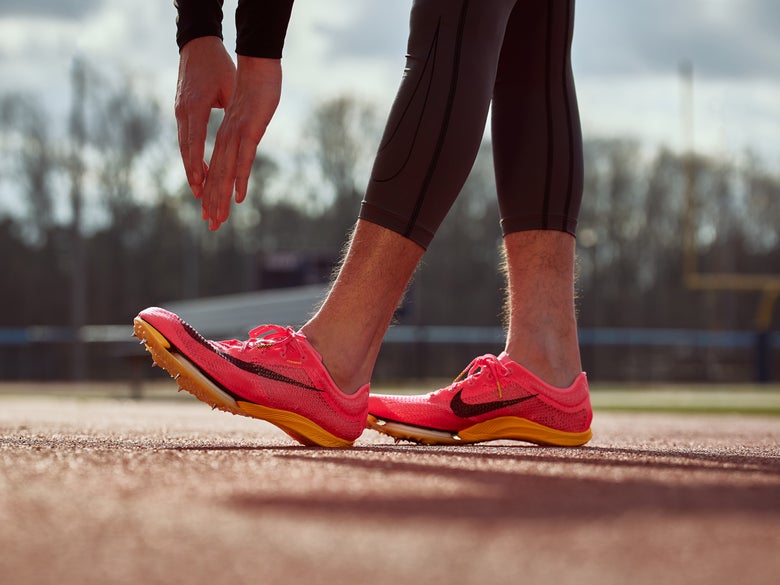
Track and Field shoes are specifically designed for competitive use in track and field events. While some road runners like to have a pair of track spikes in their arsenal for speed workouts, they are not essential by any means. Our selection of Track and Field shoes includes footwear designed specifically for each track and field event, from sprint spikes, distance spikes, throw shoes, and jump shoes. Each type of shoe is optimized to offer benefits to the athletes in those events. If you are competing in track and field events, we have a plethora of resources to help you choose your next track spike. From guides on How to Buy Track & Field Shoes to learning how they should fit, we have the best spikes for your chosen event and needs.
9. Cross Country Shoes

Similar to track spikes, Cross Country shoes are specifically designed for cross country competition and are not generally used outside of the sport. We carry both cross country spikes and flats that offer the perfect amount of cushioning, compliance, and traction for cross country races. If you are planning to participate in cross country and are interested in learning all about cross country shoes, we have guides to help you Choose the Perfect XC Spike or Flat for your needs and can guide you to the Best Cross Country Running Shoes of the year.
Conclusion
No matter the type of running you prefer, whether you are a marathon runner, mountain trail explorer, casual jogger, or speedster on the track, there is a running shoe designed to meet your exact needs. Knowing the differentiating features and purposes of each type of shoe is key to discovering the right shoe for you. We hope this guide is the first step in your journey of choosing the perfect shoe for your needs. If you are still unsure what shoe you need, check out our guide on How to Choose the Best Running Shoe.
